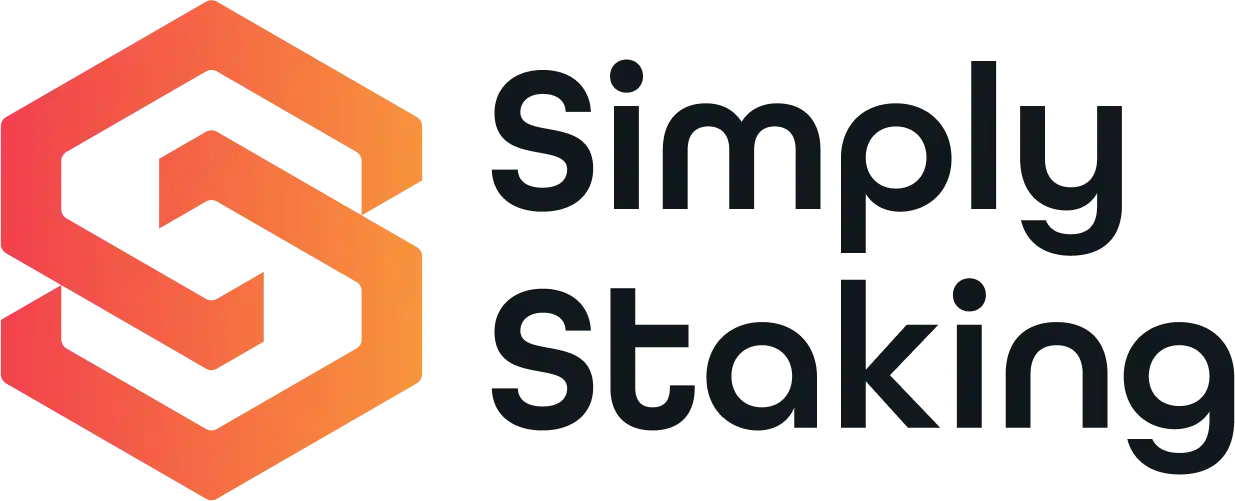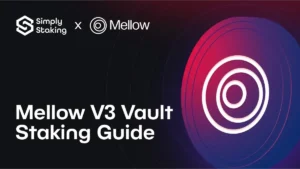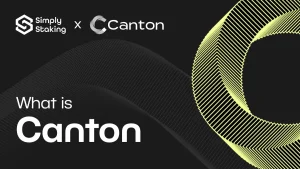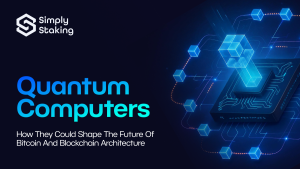Introduction
In November 2023, Infura, developed by Consensys, along with Microsoft, Chainstack, and several other companies, announced the launch of the Decentralized Infrastructure Network (DIN); a novel decentralised RPC-as-a-service designed to streamline access to Ethereum and other leading blockchains (Consensys, 2023). The new DIN network aims to provide a decentralised service for developers to connect their applications easily and reliably to blockchain networks like Ethereum.
The DIN initiative is part of Infura’s broader mission to cultivate a decentralised internet infrastructure that can support the multi-chain reality of the internet’s future. Simply Staking is happy to be among the operators supporting DIN, contributing to a decentralised network that aims to make Web3 more accessible, reliable, and efficient.
In this article, we introduce Infura and the DIN project, highlighting the important benefits DIN seeks to bring through its services and what’s next for the project.

About Infura
Infura is a blockchain infrastructure service that provides developers with APIs for interacting with blockchain networks, deploying smart contracts, and more. Tailored for the development of Web3 applications such as dApps, crypto wallets, and exchanges, Infura simplifies access to blockchains through a set of features that include broad network compatibility, API failover mechanisms for enhanced service continuity, historical data querying, and specialised APIs for managing gas costs effectively.
DIN and the Importance of RPC Services
DIN serves as a decentralised network that offers Remote Procedure Call (RPC) services for decentralised applications (dApps) and developers requiring highly available, reliable, and efficient blockchain infrastructure.
But what are RPC services? RPC services play a key role in the world of computing and, more recently, have become fundamental to the development and operation of blockchain and Web3 technologies. RPCs essentially allow a program to execute a procedure on a different machine or network as if it were a local procedure call; meaning, developers can write code that executes operations on remote systems without needing to handle the complexities of the network communication between the client and the server.
In the context of blockchain and Web3, RPC services serve several vital functions:
- Blockchain Network Access: RPC services enable applications to interact with a blockchain network, allowing them to submit transactions, read block data, and query network states — essential for any dApp that needs to communicate with a blockchain.
- Decentralisation Support: For dApps, RPC services make it possible to interact with blockchains without the need to run a full node locally, thereby supporting the decentralised nature of these networks.
- Cross-Chain Operations: With the growth of multi-chain ecosystems, RPC services facilitate operations across different blockchains, enabling more complex and integrated dApp functionalities.
The Key Value of DIN
Amid this context, the value provided by DIN lies in its approach to solving a common challenge in the blockchain space: ensuring that applications can always access the blockchain data they need without interruptions. Its most significant value-provide lies in the network’s failover protection (currently provided on Polygon and Ethereum, to be extended to other networks in the future); which means that in the event of an outage, RPC traffic can be rerouted from one DIN partner to another to ensure uninterrupted service for DIN clients.
Hence, there are four key reasons why DIN is an important development for the blockchain space:

The Roadmap Ahead
The initial launch of DIN with its first set of partners was merely the beginning of a journey towards fully decentralised infrastructure. Over time, DIN plans to add more blockchains to its network, improving its failover protection, bringing more partners into the DIN ecosystem, enhancing the network’s capabilities and making Web3 even more resilient to support the broader adoption of blockchain technology.
Here’s an overview of what’s on the horizon for DIN:
Expansion of Routed Connectivity and Failover Protection
A key focus for Infura in the near future is to expand the number of networks it can offer its services to. Firstly, DIN looks to expand its routed connectivity to Binance Smart Chain, Mantle Network, and zkSync Era.
Similarly, DIN’s signature failover protection initially centred on the Polygon network, is set to extend its reach to also include Avalanche, Arbitrum, and Optimism — aiming to make seamless service and network continuity a standard across multiple chains.
Introduction of New Features for Developers
On the developer side, DIN looks to enhance the developer experience with a suite of new functionalities, including:
- Bounties for Features or Networks: Developers will soon have the ability to create bounties, encouraging the addition of specific features or support for particular networks within DIN.
- Optimisation Configurations: Future updates will allow for routing optimisations based on criteria such as price, speed/location, or provider preferences; ensuring that developers can tailor the DIN service to best fit the requirements of their applications.
For Web3 Infrastructure Providers
When it comes to infrastructure providers, DIN’s communicated commitment has so far centred around three key points:
- Equal Access to Shared Resources: Ensuring all providers have equal access to shared features and networks is a priority, to foster a balanced ecosystem where each participant can contribute to and benefit from the network’s growth.
- Compensation Mechanisms: A fair compensation model for served API requests is in development, aimed at rewarding providers for their contributions to network stability and capacity.
- Transparency and Accessibility: DIN is dedicated to maintaining transparency around RPC demand and network performance to support the optimisation of resources and the balancing of demand across the network. Additionally, the integration with popular tools like MetaMask, allowing users to connect through various DIN providers, is anticipated to enhance accessibility and user choice.
Conclusion
The Decentralized Infrastructure Network is a significant step forward in making the blockchain more accessible, reliable, and efficient for developers and users alike. Looking ahead, DIN’s roadmap is geared towards building a more robust, flexible, and user-centric network by expanding failover protection, introducing new developer-centric features, and evolving the ecosystem for infrastructure providers.
As part of this network, Simply Staking is excited to contribute to a future where Web3 applications can thrive on a robust and collaborative infrastructure. Such a forward-looking approach not only aligns with the ethos of the blockchain community but also reinforces the network’s commitment to fostering an open, decentralised internet.























































